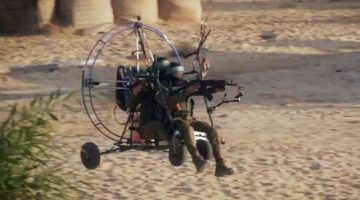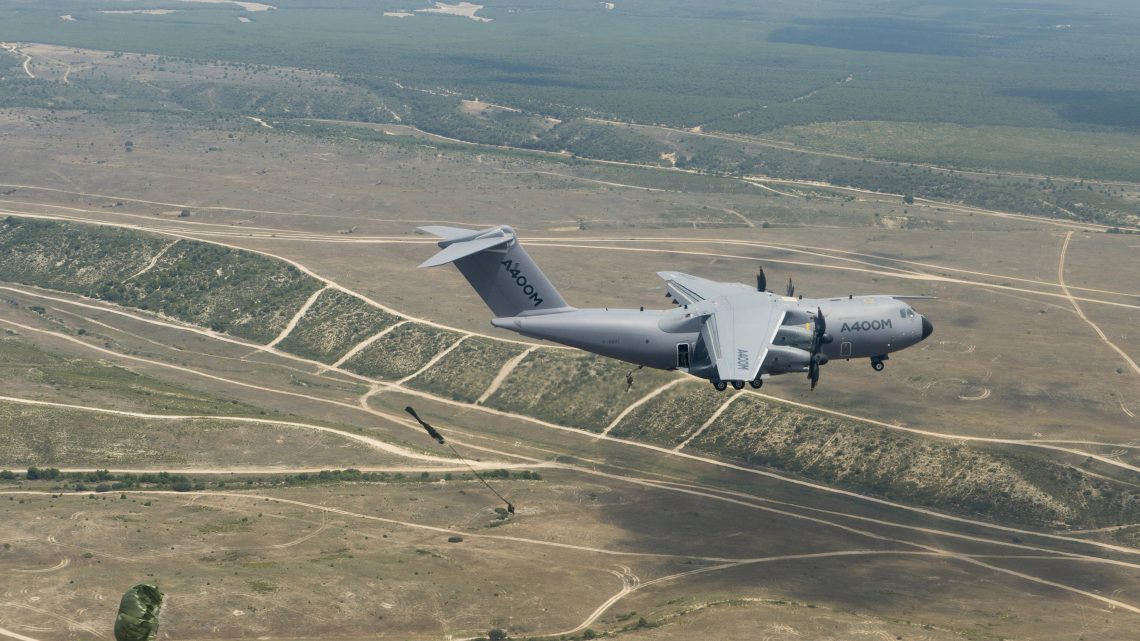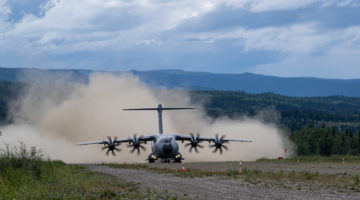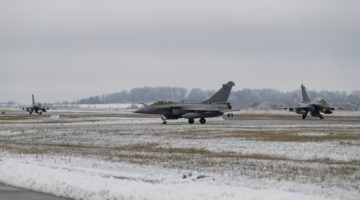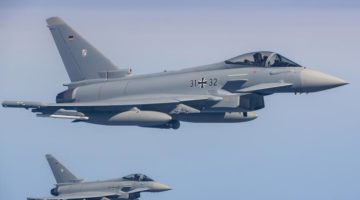Photo credit © Airbus Defence and Space
According to a press release dated today from Airbus Defence and Space:
Airbus Defence and Space has successfully completed the first paratrooping trials of the A400M new generation airlifter. Spanish Army troops took part in a series of jumps at drop zones in France and Spain. The 11-flight test program, which also included free fall jumps from the ramp, culminated in the successful dispatch of 20 troops – ten from each of the left and right-hand doors – in a single run at 1,500ft. Further tests are planned.
The A400M can carry up to 116 fully-equipped paratroops. Both Francis Tusa and Murielle Delaporte have provided further insight into the evolving para capabilities of the A400M.
Francis Tusa has noted that:
It was always a serious criticism that there was going to be a serious gap between the RAF retiring its C-130Js and the arrival of full capabilities of the A400M, with this impacting seriously on key areas such as Special Forces operations.
Well, this would seem to be a far smaller set of fears with the pace of clearance. Indeed, one experienced UK hack spoke what others were thinking: “Looks like A400M will enter service with more paradrop options than the J will have when it exits service”.
Almost certainly an exaggeration, but it goes to show how rapidly Airbus Military have been expanding the envelope. Partly, the teaming of UK and French authorities in this area seems to have allowed a range of concurrent – and fully mutually inked– activities to be undertaken. To go back to the “core” fact: rather than a 2020–22 time frame for many, key tactical air operational capabilities, A400M will see 75–80% of these in mid-2014. That is a massive acceleration of capabilities.
Murielle Delaporte highlighted the air drop and paratrooper role in her piece in the widely read French weekly news magazine Valeurs Actuelles.
Delaporte highlighted the fact that the plane can reduce speed to 110 knots to provide for an airdrop which decreases the surface area for dispersing the force. This in turn allows the force to more rapidly consolidated the force now on the ground.
She noted that :
Grâce à sa capacité à réduire sa vitesse jusqu’à 110 nœuds (204 kilomètres-heure), l’Atlas diminue la surface de dispersion, gage d’un regroupement rapide des troupes au sol.
Contrairement aux autres avions de transport tactique, cette faculté perdure à très haute altitude (40 000 pieds, 12 000 mètres), ce qui, allié à une rampe arrière nettement plus large, permet le largage simultané de plusieurs chuteurs opéra- tionnels.
L’avantage dans le cadre d’une mission — qu’elle soit d’assaut, de reconnaissance ou de sauvetage — est bien évi- demment la possibilité de larguer plus de soldats au même endroit au même moment et d’accroître d’autant leur capacité opérationnelle et leur protection.
L’Atlas est donc considéré comme particulièrement novateur en matière de largage de parachutistes, puisqu’il permet de quasi doubler le nombre de ces derniers, tout en réduisant de moitié le temps de saut.
Or put in English :
The advantage for the mission is obviously the possibility of dropping more soldiers in the same place at the same time and even increase their operational capacity and protection.
The Atlas is considered particularly innovative in skydiving, since it allows almost double the number of the latter, while halving the time jump.
And for the airdropping of pallets of equipment, the Atlas has a rail system integrated on the modular cargo floor which facilitates configuration changes and allows a multiplicity of combinations of passenger and equipment.
Various tests were also conducted this year with success in Fonsorbes and Cazaux with light pallets (from 15 to 320 kilos) laterally and dropped heavy loads (up to 4 tonns) by the rear ramp. Pallets can again be distributed to very high or very low altitude (15 feet, five meters!).






